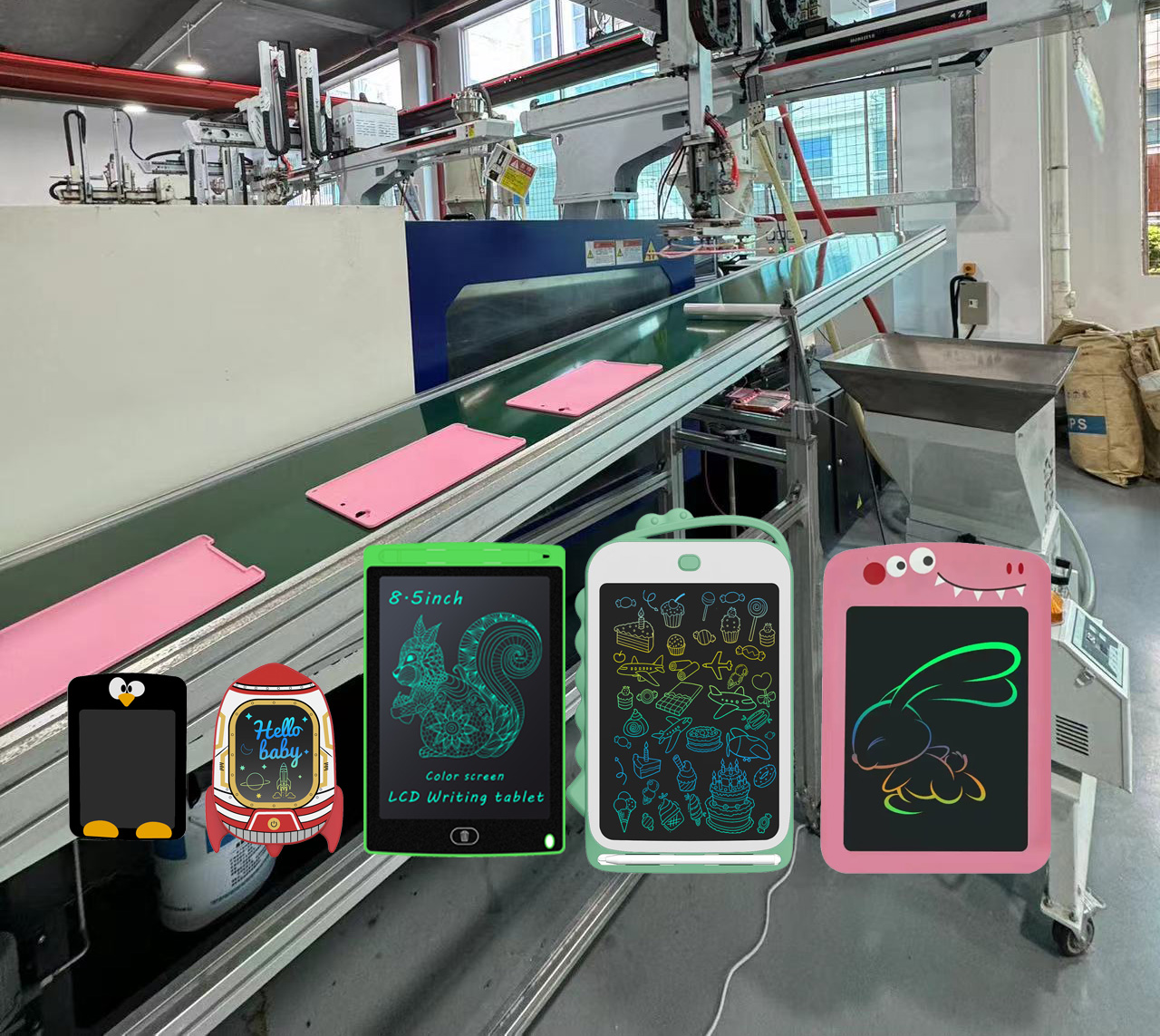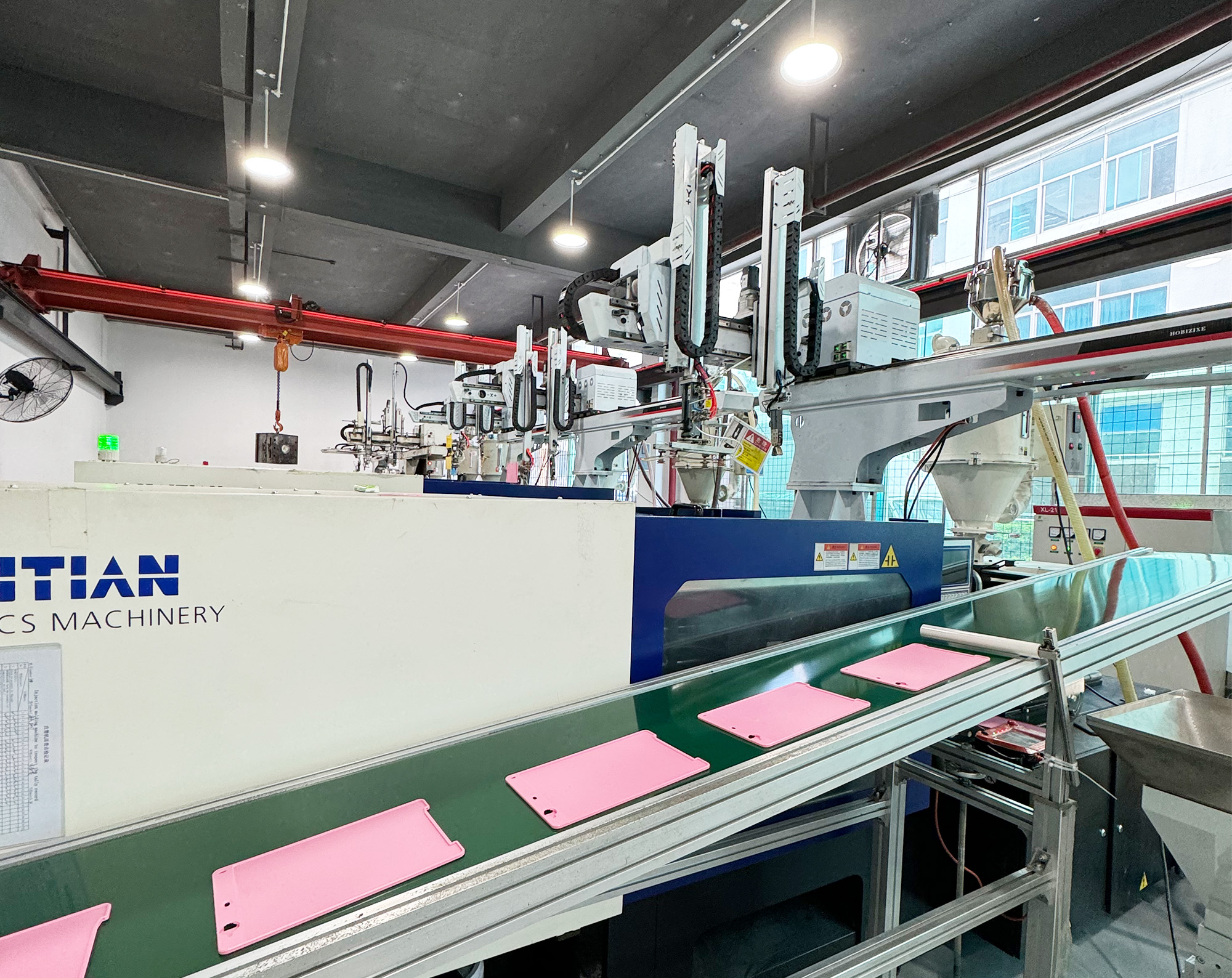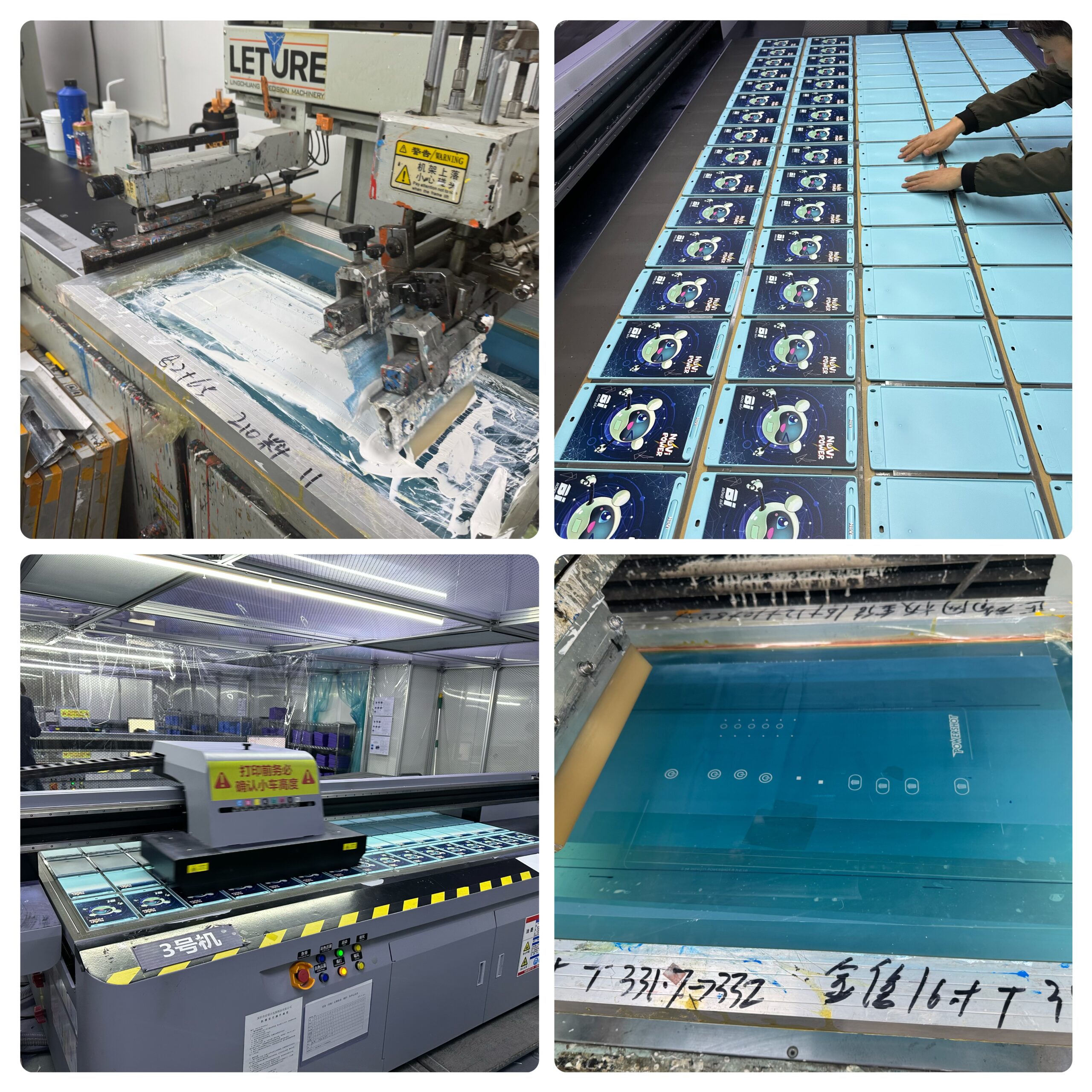Top 10 LCD Drawing Toys Manufacturers: A Comprehensive Comparison Guide
Finding reliable LCD drawing toy manufacturers feels overwhelming when hundreds of suppliers claim to offer the best quality, pricing, and service for your business needs.
Top LCD drawing toy manufacturers distinguish themselves through proven quality systems, flexible minimum orders, customization capabilities, comprehensive certifications, and reliable production capacity, with the best suppliers offering transparent communication and long-term partnership approaches rather than transactional relationships.
After eight years of working directly with global buyers and seeing countless supplier relationships succeed or fail, I understand what separates exceptional manufacturers from mediocre ones. The difference often comes down to manufacturing philosophy, quality consistency, and genuine commitment to customer success rather than just competitive pricing.
Choosing the right manufacturer impacts every aspect of your business from product quality and customer satisfaction to delivery reliability and profit margins. Smart buyers evaluate manufacturers based on comprehensive criteria rather than focusing solely on price comparisons.
How to Evaluate and Select the Right LCD Drawing Toys Manufacturer for Your Business?
Manufacturer selection requires systematic evaluation of production capabilities, quality systems, business practices, and long-term partnership potential rather than simple price comparisons.
Effective manufacturer evaluation examines production capacity, quality certifications1, customization flexibility2, communication effectiveness, and financial stability, with successful partnerships requiring aligned business values and complementary capabilities that support mutual growth objectives.
!
Production Capabilities and Quality Systems
Manufacturing excellence depends on consistent processes, modern equipment, and systematic quality control that ensures reliable product output across all production runs.
Manufacturing Infrastructure Assessment
Production capacity evaluation starts with understanding daily output capabilities, seasonal capacity variations, and ability to handle rush orders without compromising quality standards. Our 2,000 square meter facility produces 20,000 units daily with scalable capacity that accommodates seasonal demand fluctuations and urgent delivery requirements. Equipment modernization includes automated assembly lines, precision injection molding machines, and computerized quality testing systems that ensure consistent product quality and efficient production cycles. Quality control systems integrate incoming material inspection, in-process monitoring, and final product testing with documented procedures that maintain ISO 9001 compliance3 standards. Workforce stability and training programs ensure skilled technicians maintain quality standards while continuous improvement initiatives enhance efficiency and reduce defect rates. Backup systems and redundancy planning protect against equipment failures and supply chain disruptions that could impact delivery commitments to customers.
Certification and Compliance Standards
International certifications demonstrate manufacturer commitment to quality and safety standards that protect your business from liability risks and market access barriers. CE marking ensures European market compliance for electrical safety and electromagnetic compatibility requirements that affect LCD drawing toy sales throughout European Union countries. RoHS certification confirms restricted substance compliance that satisfies environmental regulations and corporate sustainability requirements across global markets. CPSIA compliance enables US market access with child product safety requirements including lead content limits and small parts regulations that affect toy safety standards. BSCI certification4 demonstrates ethical manufacturing practices including worker rights, environmental protection, and social responsibility that align with corporate social responsibility requirements. Additional certifications including EN71, UL4000, and FCC provide comprehensive market access while demonstrating manufacturer investment in quality and compliance systems.
Communication and Service Excellence
Effective manufacturer relationships depend on clear communication, responsive service, and proactive problem-solving that supports your business objectives and customer satisfaction.
Communication Effectiveness Evaluation
Language capabilities and cultural understanding facilitate smooth business relationships with manufacturers who can communicate complex technical requirements and resolve issues efficiently. Response time standards should include 24-hour email responses, same-day urgent issue handling, and scheduled regular communication that keeps projects on track and addresses concerns promptly. Technical expertise enables manufacturers to provide design guidance, material recommendations, and production optimization suggestions that improve product quality and cost-effectiveness. Project management systems track production progress, quality milestones, and delivery schedules with regular updates that enable proactive planning and issue resolution. Documentation quality includes clear specifications, detailed quotations, and comprehensive production reports that support quality control and business planning requirements.
Service Level Standards
Sample development capabilities demonstrate manufacturer flexibility and technical competence through rapid prototyping, design iteration, and quality validation that accelerates product development cycles. Customization support includes logo application, color matching, packaging design, and feature modifications that differentiate your products in competitive markets. After-sales support encompasses warranty handling, technical assistance, and ongoing consultation that maintains customer satisfaction and supports long-term business relationships. Flexibility in order management includes minimum quantity adjustments, delivery schedule modifications, and rush order accommodation that adapts to changing business requirements. Problem resolution processes should include clear escalation procedures, documented corrective actions, and follow-up verification that prevents recurring issues and maintains quality standards.
OEM vs. ODM: Choosing the Right Manufacturing Model for Your LCD Drawing Toys Business?
Manufacturing model selection affects product development timelines, investment requirements, customization possibilities, and competitive positioning in target markets.
OEM manufacturing provides cost-effective production of existing designs with limited customization, while ODM offers comprehensive product development from concept through production, with hybrid approaches combining elements of both models to optimize specific business requirements.
OEM Manufacturing Advantages and Applications
Original Equipment Manufacturing enables rapid market entry with proven products while minimizing development costs and technical risks associated with new product creation.
Cost and Time Efficiency Benefits
Existing product tooling eliminates mold development costs and lead times, enabling immediate production starts with established quality standards and proven manufacturing processes. Product development timelines reduce to 2-4 weeks for sampling and customization compared to 8-12 weeks for complete ODM development cycles. Lower minimum order quantities typically start at 500 units for OEM products versus 1,000+ units for ODM development, making OEM accessible for smaller businesses and market testing. Reduced investment requirements focus on inventory and marketing rather than product development costs, improving cash flow and reducing financial risk. Proven product performance eliminates technical risks associated with new designs while established manufacturing processes ensure consistent quality and reliable delivery schedules. Market entry speed advantages enable quick response to seasonal opportunities and competitive pressures through existing product availability.
Customization Within OEM Framework
Logo application through screen printing, UV printing, or laser engraving provides brand differentiation while maintaining cost-effective OEM pricing structures. Color customization enables brand alignment through Pantone matching and custom color schemes that differentiate products without extensive tooling modifications. Packaging customization includes retail packaging design, gift box presentation, and branded materials that enhance perceived value and market positioning. Accessory modifications such as custom stylus designs, carrying cases, and user manuals provide additional differentiation opportunities within OEM cost structures. Feature variations including button placement, screen size selection, and battery configuration enable product line diversification through existing platform modifications. Bundle creation combines multiple products or accessories in custom packages that create unique market offerings while leveraging existing manufacturing capabilities.
ODM Development Process and Benefits
Original Design Manufacturing provides complete product development services from concept through production, enabling unique product creation and competitive differentiation.
Comprehensive Development Services
Concept development begins with market research, user requirement analysis, and technical feasibility studies that ensure product viability and market acceptance potential. Industrial design services include aesthetic development, ergonomic optimization, and user interface design that create appealing and functional products. Engineering development encompasses circuit design, software programming, and mechanical engineering that transforms concepts into manufacturable products. Prototyping services provide functional samples for testing, validation, and refinement through multiple development iterations that optimize performance and manufacturability. Testing and certification support includes safety testing, regulatory compliance, and quality validation that ensures market readiness and liability protection. Production planning includes manufacturing process development, quality control procedures, and supply chain optimization that ensures efficient and reliable production.
Intellectual Property and Market Positioning
Design ownership provides exclusive rights to unique products that create sustainable competitive advantages and protect market positioning from direct competition. Patent applications and trademark registration protect intellectual property investments while creating barriers to competitive copying and market entry. Exclusive manufacturing agreements prevent suppliers from selling identical products to competitors while ensuring continued availability and pricing stability. Technical documentation transfer includes complete engineering files, manufacturing specifications, and quality standards that protect your investment and enable alternative sourcing if needed. Brand integration throughout the design process creates cohesive product families that reinforce brand identity and market positioning. Long-term product roadmap development enables continuous innovation and market leadership through planned product evolution and improvement cycles.
Custom LCD Drawing Toys Development: From Concept to Production with Manufacturers?
Custom product development requires systematic project management, technical collaboration, and quality validation to transform innovative concepts into marketable products successfully.
Custom LCD drawing toy development involves concept validation, technical specification, prototype development, testing verification, tooling creation, and production launch, with successful projects requiring 12-16 weeks from concept approval to first production shipment.
Concept Development and Technical Specification
Product development success depends on thorough planning, clear specification, and realistic timeline management that aligns technical possibilities with market requirements and budget constraints.
Market Research and Concept Validation
Target audience analysis identifies user needs, preferences, and behavioral patterns that inform design decisions and feature prioritization for maximum market appeal. Competitive landscape evaluation examines existing products, pricing strategies, and market gaps that reveal opportunities for differentiation and competitive advantage. Feature requirement prioritization balances user desires with technical feasibility and cost constraints to optimize product value and manufacturing efficiency. Use case scenario development explores various applications and user interactions that inform ergonomic design and functional specification decisions. Market sizing and pricing analysis validate commercial viability while establishing realistic volume projections and revenue expectations. Concept testing through focus groups, surveys, and prototype demonstrations validates market acceptance before significant development investment.
Technical Specification Development
Display technology selection considers screen size, resolution, writing pressure sensitivity, and contrast ratios that affect user experience and manufacturing costs. Power management specifications include battery type, life expectancy, charging requirements, and energy efficiency that influence user satisfaction and production complexity. Housing design requirements encompass material selection, durability standards, safety compliance, and aesthetic preferences that balance functionality with manufacturing feasibility. User interface design defines button placement, operation logic, and feedback systems that optimize usability while maintaining manufacturing simplicity. Connectivity features including Bluetooth, USB, or wireless capabilities add functionality while increasing technical complexity and development costs. Environmental resistance specifications address moisture protection, temperature tolerance, and drop resistance that ensure product durability in target applications.
Prototype Development and Testing Validation
Systematic prototype development and comprehensive testing validate design decisions while identifying issues before expensive tooling commitments and production launches.
Progressive Prototype Development
Concept prototypes demonstrate basic functionality and form factor through 3D printing and functional breadboard circuits that validate core design principles. Engineering prototypes integrate final components and manufacturing processes to test performance, durability, and user experience under realistic conditions. Pilot production samples use actual production tooling and processes to validate manufacturing procedures, quality control systems, and final product specifications. User testing programs gather feedback from target users through structured testing protocols that identify usability issues and improvement opportunities. Performance validation includes battery life testing, display quality evaluation, and durability assessments that ensure product specifications meet market requirements. Regulatory testing encompasses safety compliance, electromagnetic compatibility, and environmental standards that ensure market access and liability protection.
Quality Validation and Optimization
Manufacturing process validation ensures consistent quality through production trial runs, statistical process control, and quality system verification. Component sourcing validation confirms supplier capabilities, quality standards, and supply chain reliability for consistent production capability. Cost optimization analysis examines material alternatives, process improvements, and design modifications that reduce production costs while maintaining quality standards. Design for manufacturing review identifies potential production issues and optimization opportunities that improve efficiency and reduce defect rates. Final specification documentation includes comprehensive technical drawings, material specifications, and quality standards that ensure consistent production outcomes. Production launch planning encompasses capacity allocation, quality control procedures, and delivery schedule coordination that ensures successful market introduction.
Private Label LCD Drawing Toys: A Step-by-Step Guide to Working with Manufacturers?
Private label partnerships enable brand building through customized products while leveraging manufacturer expertise and established production capabilities for efficient market entry.
Private label LCD drawing toy development requires brand strategy alignment, product selection optimization, customization planning, quality assurance, and marketing support coordination, with successful programs creating distinctive brand positioning while maintaining cost-effective production.
Brand Development and Product Strategy
Private label success requires strategic brand positioning, product portfolio planning, and market differentiation that creates sustainable competitive advantages through unique value propositions.
Brand Positioning and Market Strategy
Target market definition identifies specific customer segments, distribution channels, and geographic markets that inform product selection and customization priorities. Brand personality development establishes visual identity, messaging themes, and value propositions that differentiate private label products from generic alternatives. Pricing strategy development balances market positioning with production costs and competitive pressures to optimize profitability and market penetration. Distribution channel analysis examines retail requirements, margin expectations, and promotional support needs that influence product design and packaging decisions. Competitive differentiation identifies unique features, benefits, and positioning strategies that create sustainable advantages in target markets. Long-term brand roadmap planning enables consistent product development and market expansion through systematic brand building initiatives.
Product Portfolio Planning
Core product selection focuses on proven designs with broad market appeal while enabling customization that creates brand differentiation and competitive advantages. Product line architecture creates logical groupings and progressive feature sets that encourage customer loyalty and repeat purchases through brand family consistency. Size and model variety provides market coverage while maintaining manufacturing efficiency through shared components and production processes. Seasonal product planning addresses holiday markets, back-to-school periods, and gift-giving occasions that drive sales volume and brand exposure. Innovation pipeline development ensures continuous product refreshment and market leadership through planned improvements and new feature introduction. Market expansion strategy identifies opportunities for geographic growth, channel development, and category extension through successful private label programs.
Implementation and Launch Strategy
Successful private label programs require coordinated execution across product development, manufacturing, marketing, and distribution to create cohesive brand experiences and market impact.
Production and Quality Management
Manufacturing partnership agreements establish quality standards, delivery requirements, and performance metrics that ensure consistent product supply and brand protection. Quality control protocols include incoming inspection, production monitoring, and final testing procedures that maintain brand reputation and customer satisfaction. Packaging customization creates brand recognition through distinctive design, premium materials, and consistent visual identity across all customer touchpoints. Inventory management systems balance stock availability with carrying costs while preventing stockouts that damage brand credibility and sales momentum. Supplier relationship management includes regular performance reviews, continuous improvement initiatives, and strategic planning sessions that optimize partnership effectiveness. Risk management strategies address supply chain disruptions, quality issues, and capacity constraints that could impact brand availability and market position.
Marketing and Distribution Support
Brand launch planning coordinates product introduction timing, promotional campaigns, and distribution rollout to maximize market impact and sales momentum. Marketing material development includes product photography, technical specifications, and promotional content that supports sales efforts and brand building. Training programs for sales teams and distribution partners ensure effective product presentation and customer education that drives sales and brand awareness. Customer feedback systems collect market intelligence and satisfaction data that inform product improvements and brand strategy refinement. Performance measurement includes sales tracking, market share analysis, and brand recognition studies that evaluate program success and guide future investment. Continuous improvement processes incorporate market feedback, competitive intelligence, and operational insights to enhance private label program effectiveness and profitability.
Conclusion
Successful LCD drawing toy manufacturing partnerships require comprehensive evaluation of production capabilities, business alignment, and long-term growth potential rather than focusing solely on immediate cost considerations and basic quality requirements.
-
Quality certifications are essential for ensuring compliance and reliability in manufacturing processes. ↩
-
Customization flexibility can significantly enhance product differentiation and market competitiveness. ↩
-
ISO 9001 compliance indicates a commitment to quality management and continuous improvement in manufacturing. ↩
-
BSCI certification reflects ethical manufacturing practices and social responsibility, which are increasingly important to consumers. ↩
You may also be interested in:
Contact Us
Phone
+86 18975761579Website
ruiyiboard.comAddress
Shenzhen Longhua, Guangdong, China
Shenzhen Ruiyi Plastic Products Co., Ltd. is a professional manufacturer focused on eco-friendly writing products since 2016.
Our mission is to provide paper-free, ink-free, safe and environmentally friendly electronic writing solutions.



